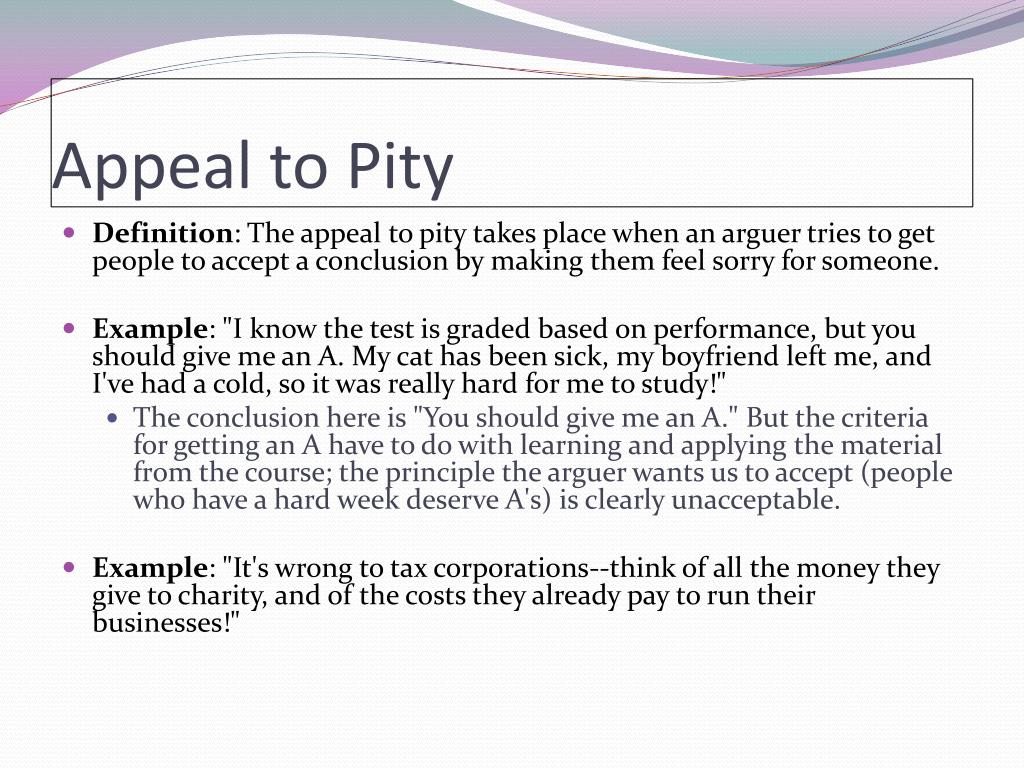

Disjunctions are true whenever at least one of the disjuncts, the sentences joined by the ‘or,’ are true. This happens when a person asserts a disjunction, a sentence of the form "either A or B, when there is at least one more option that is true. This is sometimes called the either-or fallacy. Example: “Spanking children is wrong because corporal punishment is wrong.” The last type is one that generalizes the conclusion and uses the generalized rule as a premise. Example: “If such actions were not illegal, then they would not be prohibited by the law.” In this case, the conclusion is synonymous with one of the premises. The Bible can’t be the inspired word of God unless God exists, so the argument begs the question.Īnother type of argument that begs the question is one that simply rephrases the conclusion and uses it as a premise. That occurs when one explicitly uses the conclusion as support for one of the premises. There are three common types of arguments that beg the question. Note that if this is the case, then the premises cannot serve as reasons to believe the conclusion, since believing the premises requires already believing the conclusion. This is used to determine if a search or arrest is warranted, and also used by grand juries to issue indictments.Īn argument begs the question if it is impossible to believe at least one of the premises unless one already believes the conclusion. The lowest standard of proof is probable cause. It is used in civil cases that involve the potential loss of important rights or interests, such as the termination of potential rights.

Clear and convincing evidence is a standard of proof between preponderance of evidence and beyond a reasonable doubt. This means that, given the evidence, it is more likely that the defendant is liable than not. Most civil cases are tried at the “preponderance of evidence” level. The next two level are used in civil cases. It does not mean that no doubt at all is possible, but that any doubt, given the evidence, would be unreasonable. There are four different levels of standard of proof in the law:Ĭriminal cases use the highest standard of proof, which is “beyond a reasonable doubt.” This is a high degree of probability. Standard of proof is concerned with how strong a case needs to be made. Burden of proof is concerned with who needs to make their case. That is, if the prosecution fails to make its case against the defendant, then the defense wins.īurden of proof should not be confused with standard of proof. There, the prosecution always has the burden of proof. One area where these rules do not apply is the American legal system. I heard a politician once, who was caught telling a falsehood, admit to having “committed terminological inexactitude.”ĭysphemisms convey a negative attitude towards something. In other cases, a person may use a euphemism when they have been caught doing something wrong, but want to minimize the wrongness of the action. For example, think of the words that we use to talk about the death of a pet:Įuphemisms are common in the military and in advertising. A euphemism is a positive synonym for some neutral term. 16.1.2 The Representativeness Heuristicĭifferent words and phrases passages can have the same cognitive content but differ in their emotive content.15.3.4 The Method of Concomitant Variation.14.3 Inferences to the Best Explanation.11.2.5 Definition of Conditional Probability.11.1 Calculating Conditional Probabilities.9.5 Fallacies of Unwarranted Assumptions.9.3 Fallacies of Ambiguity and Vagueness.8 Other People as Sources of Information.4.4.1 Necessary and Sufficient Conditions.3.3.2 Hints for Diagramming Categorical Syllogisms.


 0 kommentar(er)
0 kommentar(er)
